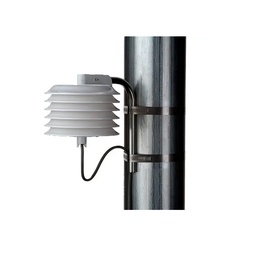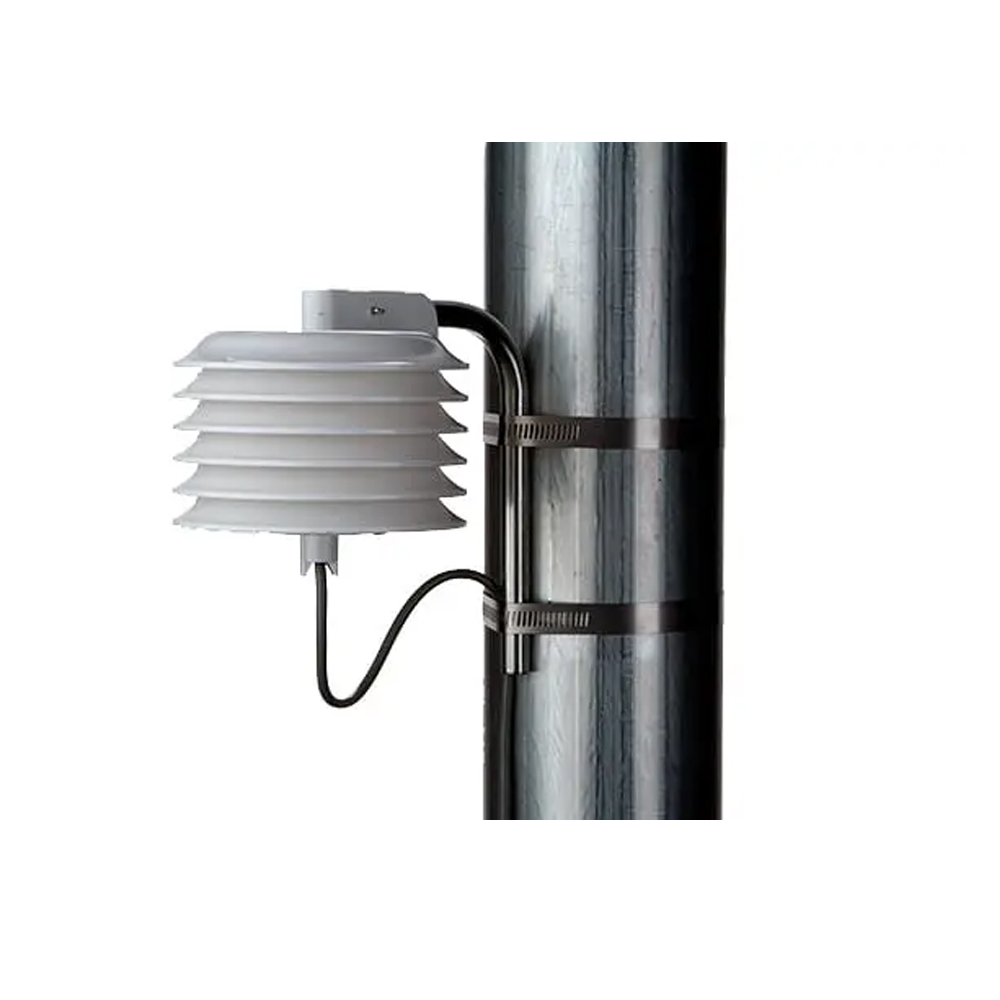Temperature sensor 110S
The 110S is ideally suited for the temperature measurement requirements of remote wind and solar energy studies. Recommended uses of the data from this sensor include calculating energy density calculations; monitoring air temperature; calculating atmospheric stability conditions; identifying icing conditions in cold climates; and estimating PV panel efficiency, which is temperature dependent.
A calibrated version, the 110SC, is available when the lowest uncertainty is the priority. It is suggested for differential temperature measurements, where two temperature sensors are deployed on the same tower.
This sensor includes an internal reference, amplifiers, and linearization enclosed in a six-plate UV-stabilized radiation shield. The universal mounting assembly connects quickly to any pipe or tower.
The sensor comes with a potted 5 m, 67 m or 90 m sensor cable. If you require a different cable length, please contact us.
Temperature sensor T60
The NRG T60 Temperature Sensor brings a new sensing element to the NRG 110S’s time-tested form. The result is a durable, reliable sensor that offers reduced measurement uncertainty and is capable of capturing measurements at higher temperatures. Because the T60 maintains the same physical design, signal output, and wiring scheme as the 110S, transitioning to this next generation sensor is exceptionally easy.
The T60 is ideally suited for the temperature measurement requirements of remote wind and solar energy studies. Recommended uses of the data from this sensor include calculating energy density calculations; monitoring air temperature; calculating atmospheric stability conditions; identifying icing conditions in cold climates; and estimating PV panel efficiency, which is temperature dependent.
Benefits:
+ Lower measurement uncertainty
+ ILAC-compliant, NIST-traceable calibrations available from an ISO 9001:2008, ISO/IEC 17025:2017 certified laboratory.
+ Can measure up to 70°C (5°C greater than the 110S)
+ Suitable for the temperature measurement requirements of remote wind and solar energy studies
+ Same physical design, body materials, and radiation shield as the 110S, ensuring seamless transition to T60




